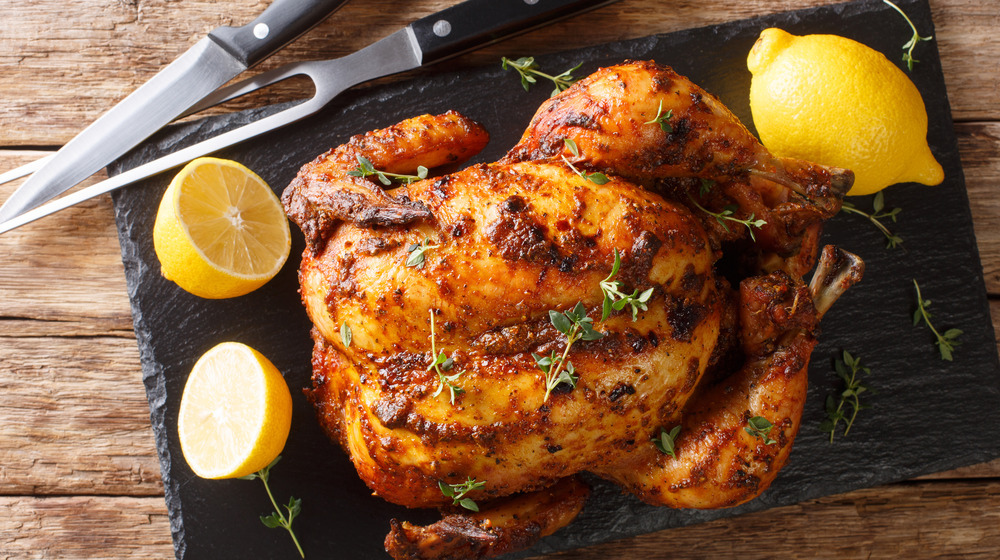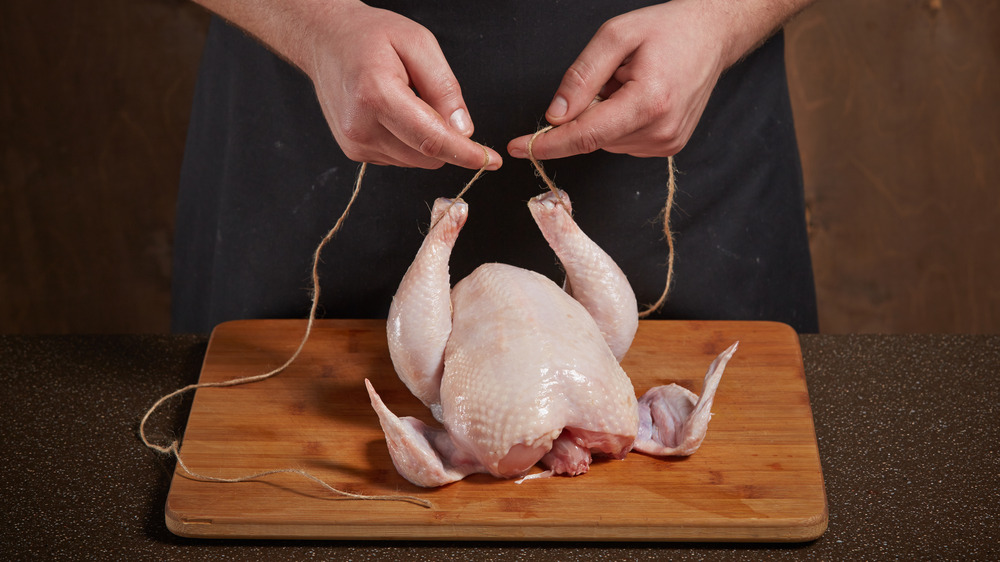The Shortcut Way To Truss Your Roast Chicken
Whole roasted chicken is a classic of American cuisine, but somewhere along the line, people seem to have stopped making it for themselves. Not all people, of course, but enough that folks have been calling attention to it in recent years (via Denise's Kitchen). Some blame Costco's well-priced and truly scrumptious rotisserie chicken, the thinking being that if you can buy a juicy, delicious, whole-cooked chicken for less than the price of a raw chicken — which many people assume is the case and, in fact, becomes more and more likely every year that Costco holds the price down at $4.99 (via The Seattle Times) — then why would you ever?
But something has shifted of late (via Meat & Poultry). Perhaps it's that pandemic supply-chain snafus have meant you can't always find a rotisserie chicken when you're looking for one? But whatever the reason, whole roasted chicken is having a moment. So let's not spoil it by making this all-too-common mistake: failing to truss that baby.
Wait. You haven't been trussing your chickens prior to roasting them? Well, no wonder your white meat's all dried out while your dark meat is still vaguely slippery. "Truss" us when we tell you that trussing your chicken is the key to the perfect roasting. As we've pointed out before, "trussing meat with butcher's twine creates a neat, tight package that cooks more evenly," only now we've discovered a super-streamlined process for trussing. It changed our lives. See if won't change yours.
Sorry, not sorry, we're taking the shortcut
Don't get us wrong, we don't think the classic method of trussing a chicken is particularly challenging. If you can form a figure eight with a piece of twine, you're halfway there. But this shortcut way to truss your roast chicken is so simple, and it yields such impressive, high-level roast chicken results, that we're finding it harder and harder to justify the ole figure-eight method. And we're not going to feel guilty about it. Nor should you.
Ready? Here goes. Simply take a length of butcher's twine, and tie the chicken's legs together at the ankles. Then take another length of twine to do the same thing to the wings.
With its legs and wings tied together (but separately), your chicken will still resist the urge to expand as it gets hotter, and therefore cook more compactly and evenly (which is the whole point of trussing). Additionally, you'll have spent less time doing string-origami on a raw chicken, which is great. And when your chicken is ready to serve, all you have to do is snip, and snip again. No messy unwinding of twine needed. Thank you, Melissa Clark (via The New York Times).

